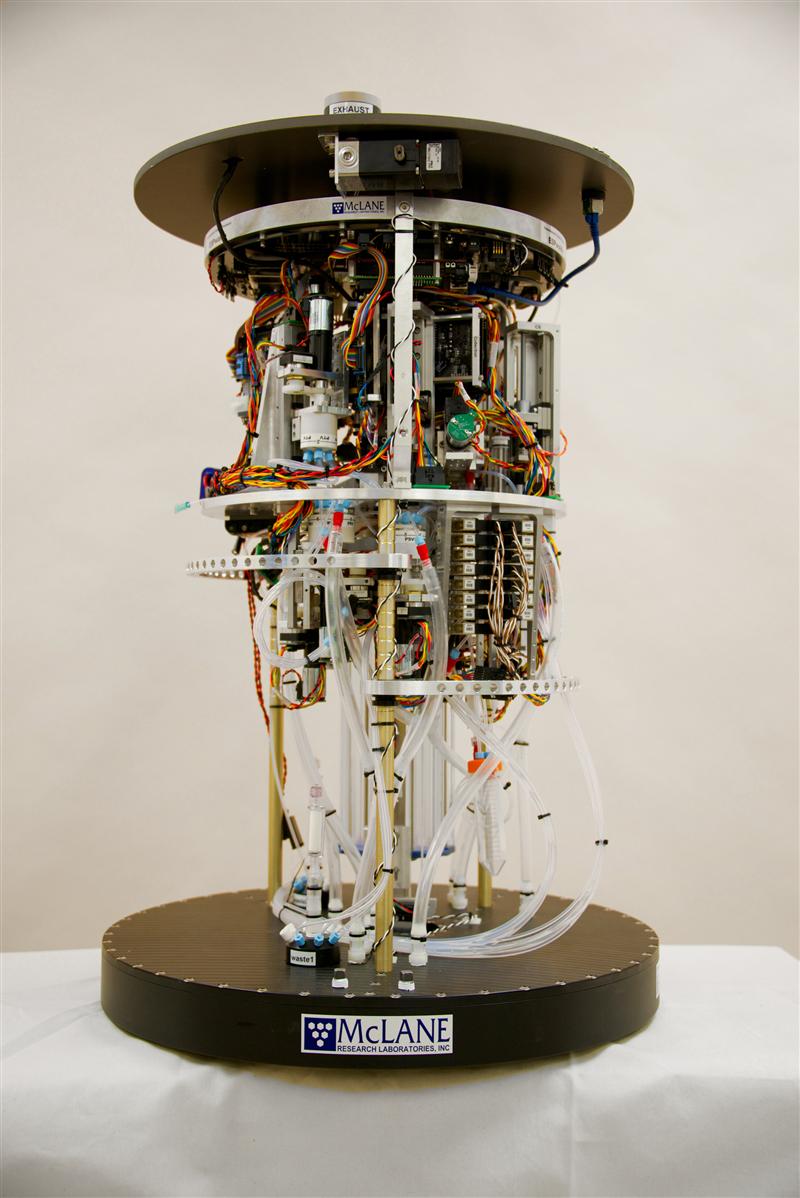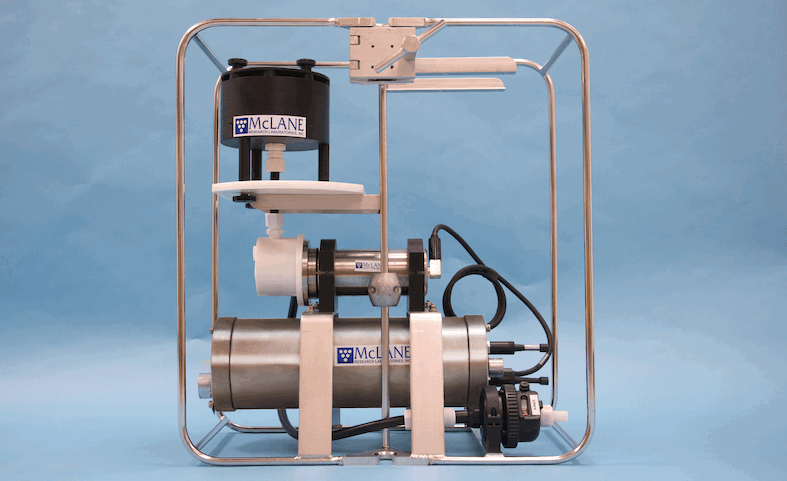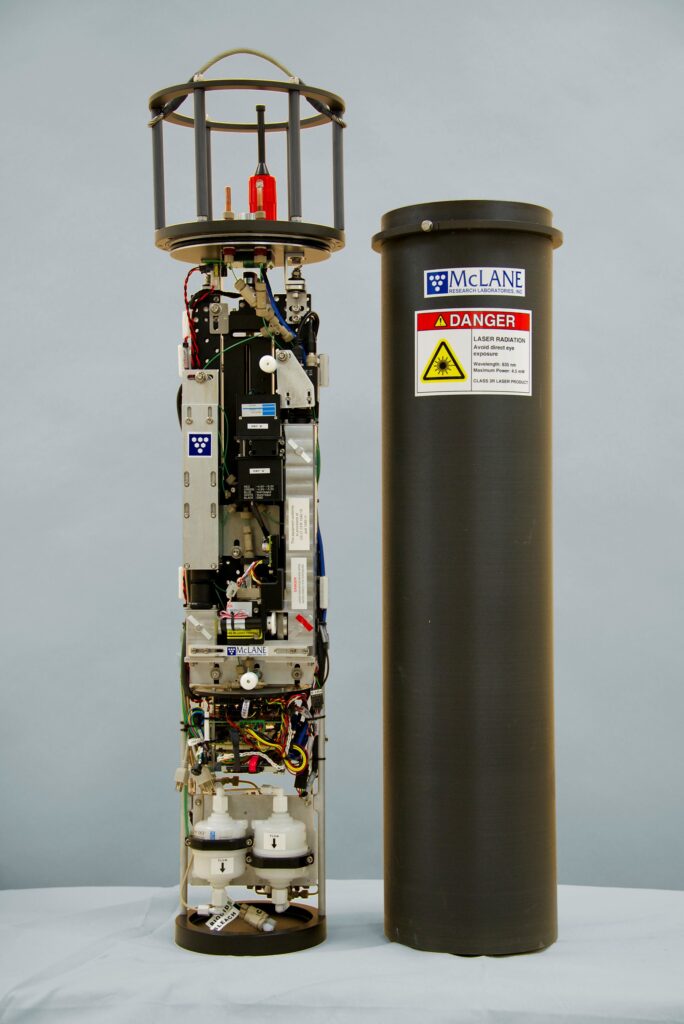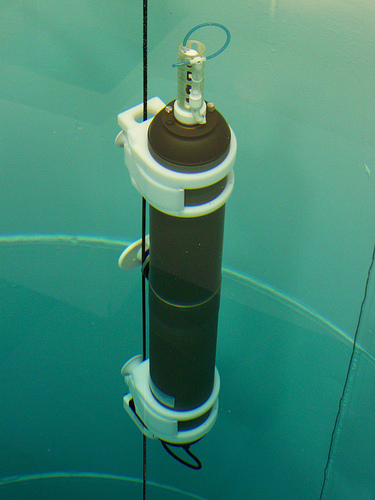BlueZone partners with over 50
world-leading original equipment
manufacturers and systems providers
McLane Environmental Sample Processor (ESP)
McLane Environmental Sample Processor (ESP)
The Environmental Sample Processor (ESP) is an in situ laboratory that collects and concentrates microorganisms or particulates from discrete water samples and automates the application of molecular probes to identify target species or toxins. Samples are collected onto 25mm membrane filters within multi-purpose reaction chambers called pucks. Analytical (array) pucks contain printed DNA or protein-based arrays designed to react only to specific rRNA or toxin targets. When the homogenized sample is exposed to the array, a chemiluminescent pattern develops which describes the detection and enumeration of multiple targets or toxins. The array is then imaged on-board with those images available for remote retrieval and analysis.
• Maximum depth: 50m with optional pressure housing.
• Number of samples: 44 (33 without archival sample); 132 puck capacity.
• Options: Platform is customizable to run secondary analytical modules.

Key Features
Up to 25-hour mission duration
Speeds up to 4.2 knots
Increased module payload capacity
Search and recovery
Hydrography
Deep sea mineral exploration
Marine & Fisheries research
Product Enquiry
Related products
The Large Volume Water Transfer System (WTS-LV) collects a single suspended particulate sample in situ onto 142mm filter media. Collection studies include particulate trace metals and hydrothermal vent sampling. Flow...
Read moreThe Imaging FlowCytobot (IFCB) uses a combination of flow cytometric and video technology to capture high resolution (up to 1 μm) images and optical data of suspended particles in-flow, from...
Read moreThe Ice Tethered Profiler (ITP) vertically travels along a fixed mooring wire at 25cm/sec and is suited for (but not limited to) sampling the water column under the ice, collecting...
Read moreRelated Articles
EverClean: Revolutionising Hull Cleaning with Robotic Precision
Hull cleaning just got smarter—meet EverClean, the robotic game-changer saving ships up to 20% in fuel costs while keeping divers out of harm’s way BlueZone Group recently had the...
Read MoreNavigating Futures: BlueZone Inspires Students at Hunter Defence Expo
Showcasing Marine Defence Capabilities, Empowering STEM Students Through Hands-on Engagement and Industry Collaboration This month, BlueZone Group had the opportunity to attend The Hunter Defence Industry Expo, a 2-day...
Read MoreFrom Shipwrecks to Shorelines: The Multi-Disciplinary Power of StarFish Side Scan Sonar
From shallow water environmental surveys to deepwater archaeological exploration Blueprint Subsea’s ‘StarFish’ side scan sonar delivers high-resolution, compact underwater imaging that’s redefining shallow water survey capabilities for marine professionals...
Read More



